Toland Way is a very steep, winding road. It’s a tough walk up.
This time of year, though, it’s worth the strain on my legs and back. The flowering plants are bountiful all along the steep banks of this road. Perhaps the soil is richer, gathering all the minerals that get washed down the mountainside.
I walked it yesterday and again today, and discovered two plants I’ve never seen before: Wild Comfrey, and Wild Coffee.
Wild Coffee, pictured above, has tube-shaped flowers tucked in next to the stem. The fruits can be dried, roasted, and used as a coffee substitute; Native Americans used the roots to treat fevers and as a purgative.
Wild Comfrey is hard to photograph because it has very small, light-colored flowers on stems that stick out far from the leaves:
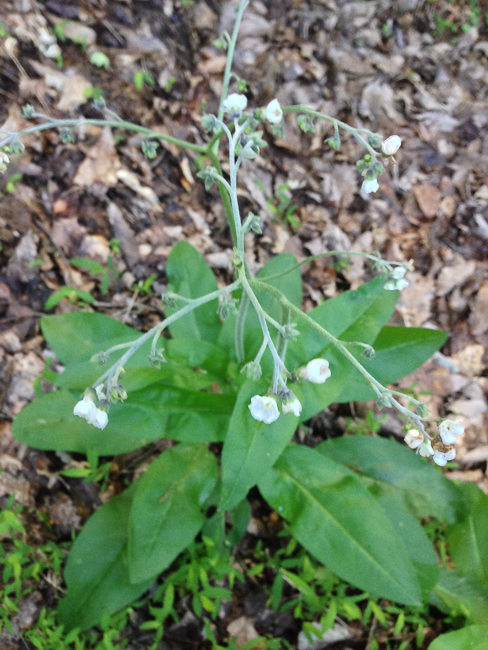
According to one of my favorite flower guidebooks, Wildflowers of Tennessee, the Ohio Valley and Southern Appalachians, Wild Comfrey has been used for “the treatment of wounds, digestive disorders, and respiratory infections. It was also used as a mild sedative.”
Besides these two new medicinal plant finds, I also found a purple flower which I thought at first was Virginia Dayflower, but on closer scrutiny I identified as Wideleaf Spiderwort:
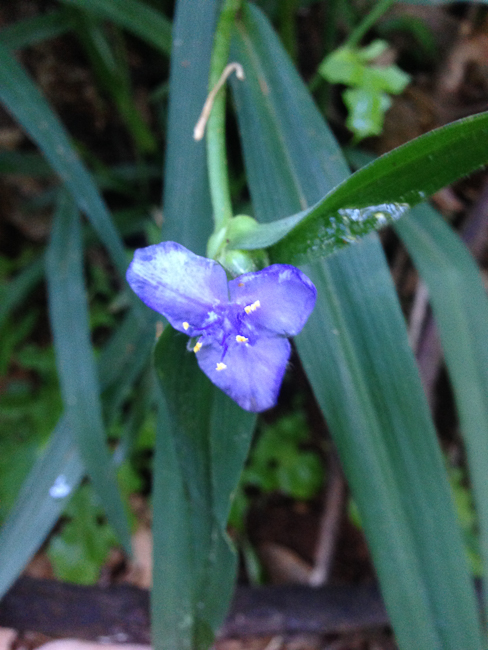
Even in this short walk, I saw many familiar friends, too:
Solomon’s Seal,
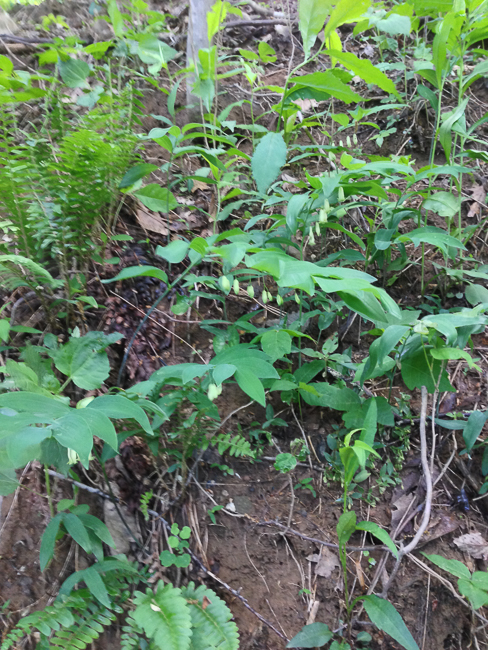
sassafras (chew the young leaves for an analgesic),
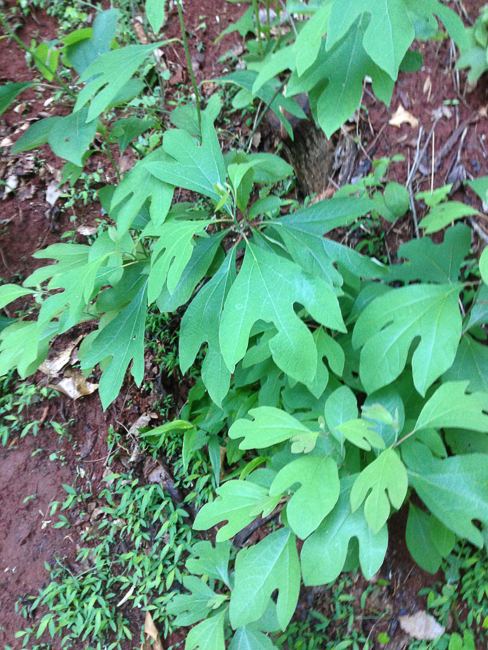
whorled horse balm (used to treat sore horses),
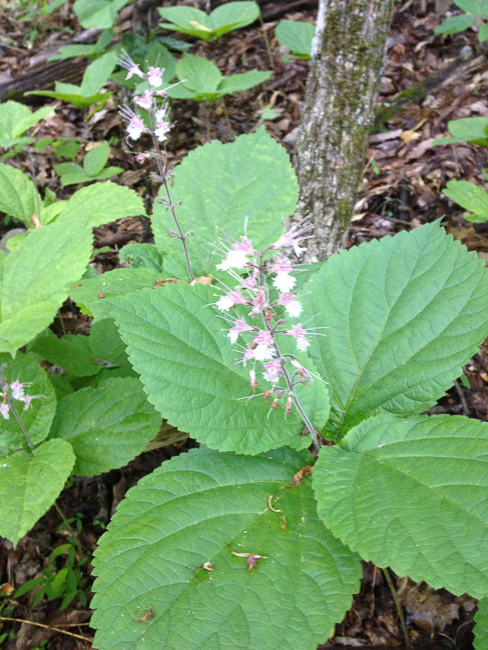
May apple,

bloodroot,
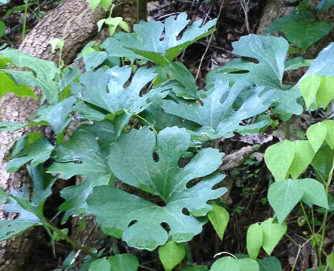
yellow wood sorrel,
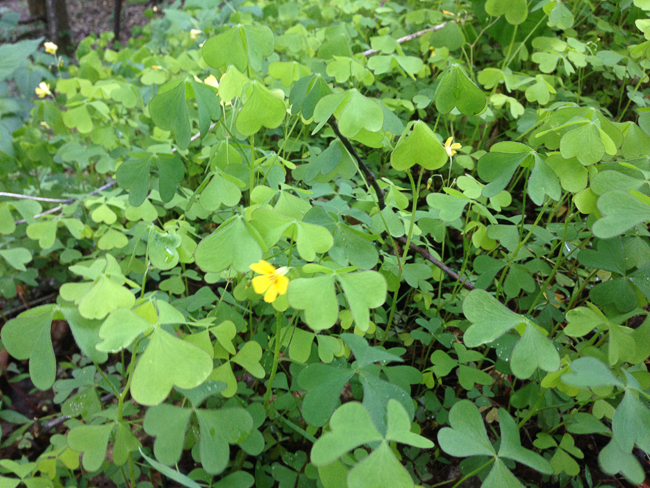
Sweet Betsy,
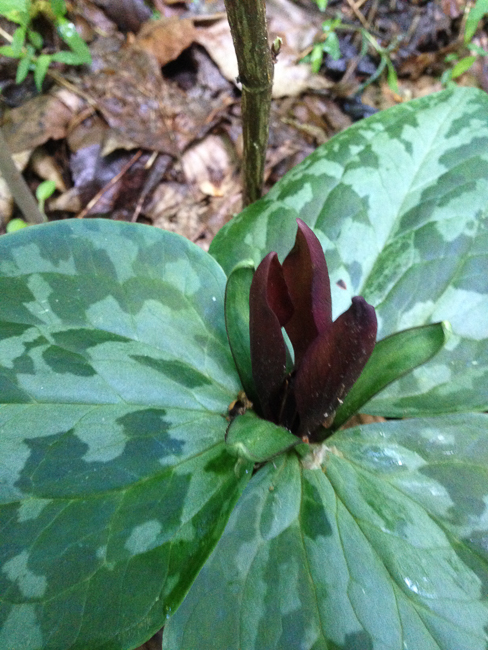
and black cohosh (not flowering yet, but I saw last year’s seed stalk).

To cap it all off, a tulip poplar blossom, perfectly arranged at the side of the road:

Today’s penny is a 2012, the year that the 2nd edition of Wildflowers of Tennessee was published.
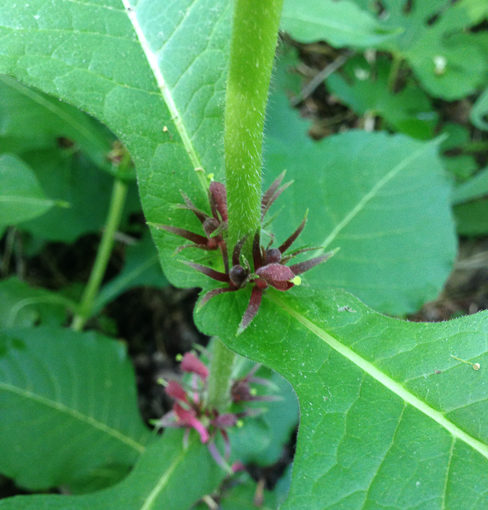
I want to live where you live!